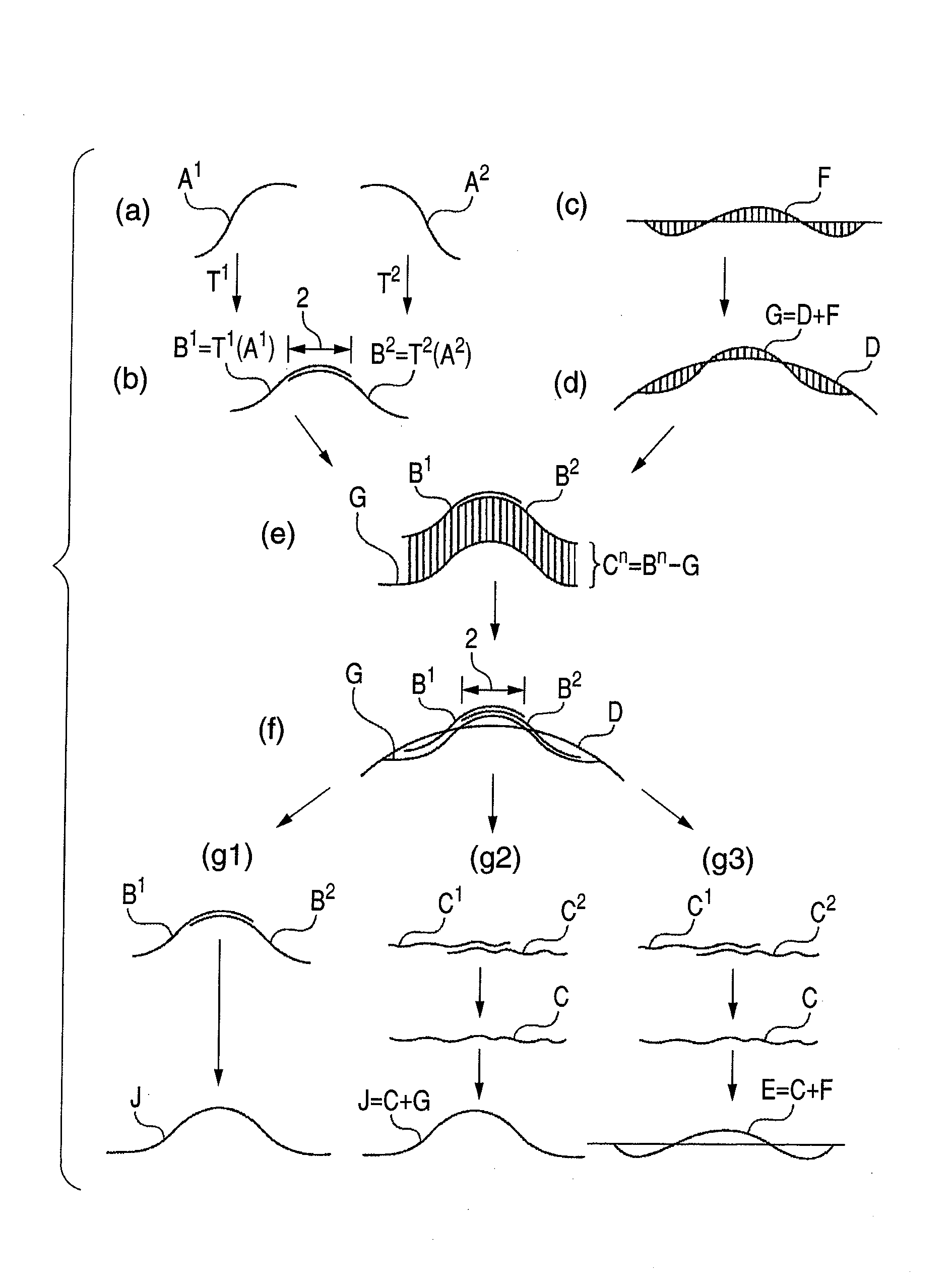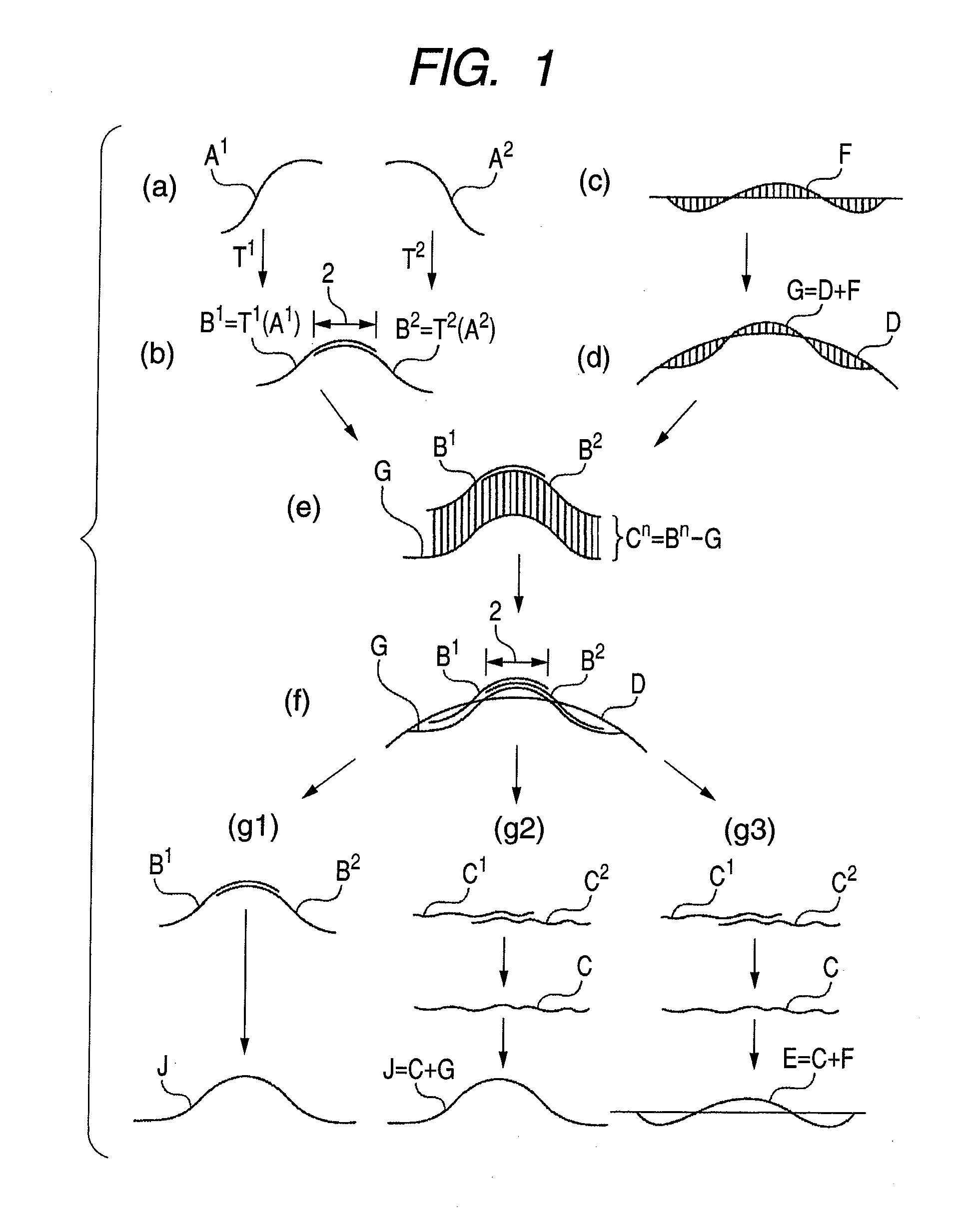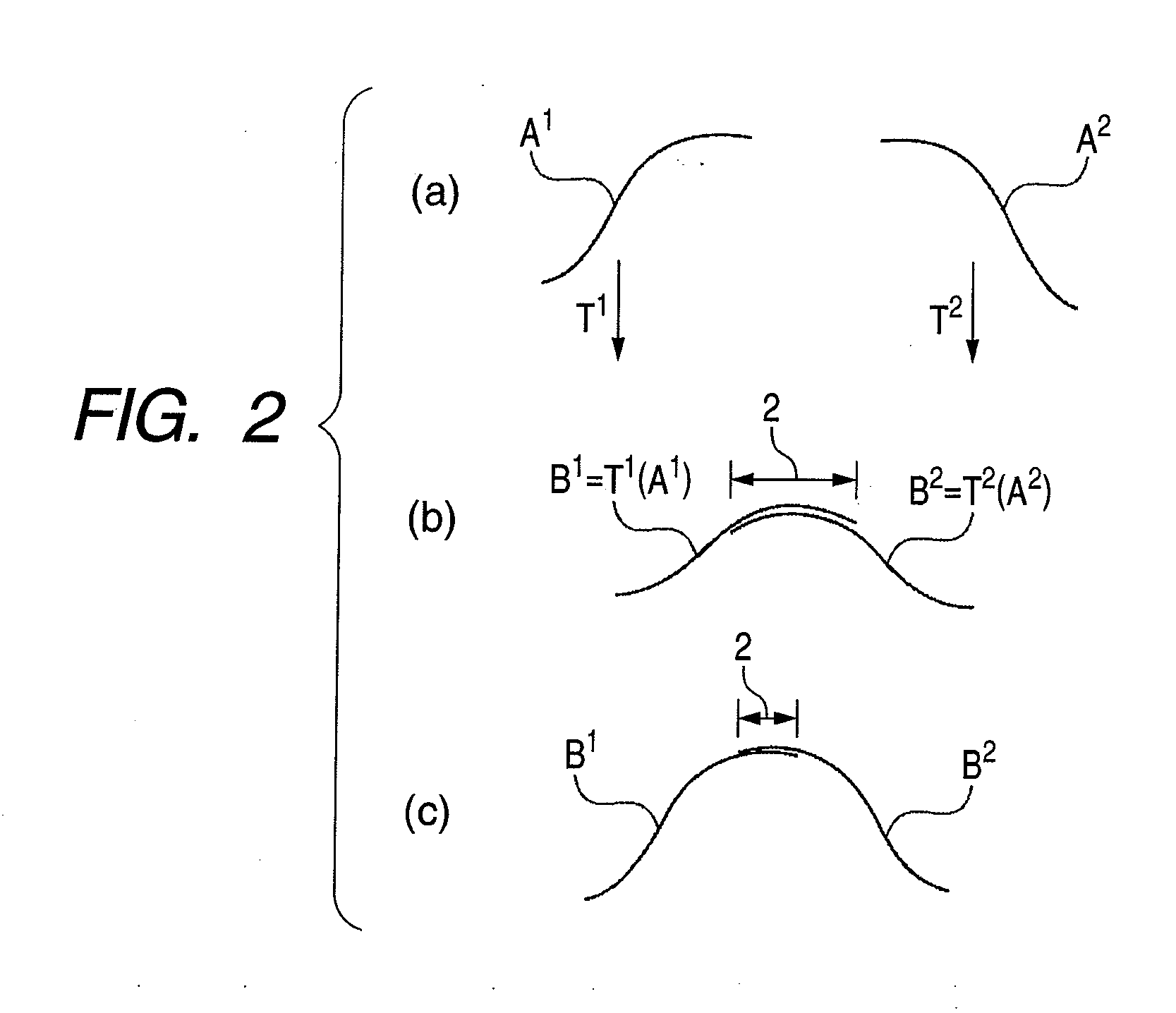Shape measurement method of synthetically combining partial measurements
a technology of partial measurement and shape measurement, applied in the field of measurement technique, can solve the problem of low accuracy level, achieve the effect of simple method, accurate determination, and efficient synthesizing of overall shap
- Summary
- Abstract
- Description
- Claims
- Application Information
AI Technical Summary
Benefits of technology
Problems solved by technology
Method used
Image
Examples
first embodiment
[0077]Now, the shape measurement method in the first aspect of the present invention will be described in detail on a step by step basis by referring to (a) to (g3) of FIG. 1. An instance of connecting two sets of cross section data will be described below for the purpose of simplicity. In this embodiment, first and second parameters are employed. The first parameter will be referred to as coordinate transformation parameter because it relates to coordinate transformation. The second parameter will be referred to as shape parameter because it relates to an approximate error shape.
[0078]Step (a): Collecting partial measurement data respectively from a plurality of partial regions of a workpiece
[0079]Step (a) will be described by referring to part (a) of FIG. 1. In (a) to (g3) of FIG. 1, A1 and A2 represent the partial measurement data collected respectively from two different measurement regions. In the case of a coordinate measuring machine, partial measurement data are three-dimens...
second embodiment
[0111]Now, the second aspect of the present invention will be described in detail also by referring to (a) to (g3) of FIG. 1. When connecting plural sets of partial measurement data by means of the coordinate transformation parameters and the shape parameter that are optimized, one of the steps (g1), (g2) and (g3) described below can be used.
[0112]Step (g1): Making plural sets of partial measurement data that are subjected to coordinate transformations overlap each other and transforming them into an overall shape.
[0113]Step (g1) will be described by referring to part (g1) of FIG. 1. The alignment of the plural sets of partial measurement data should be completed by step (f). Thus, as a result, the difference of measurement data, or the mismatch, in the overlap region should be small as described above. As illustrated, the partial measurement data B that are subjected to coordinate transformation are made to overlap each other and transformed into an overall shape J.
[0114]Step (g2):...
third embodiment
[0119]The third aspect of the present invention relates to systematic errors. This will be described in detail by referring to (a), (b), (c), (d), (e), (f), (g1), (g2), (g3), (h) and (j) of FIG. 5. A systematic error is an error that a measuring machine intrinsically has. Measurement errors typically include errors that vary from measurement to measurement and those that do not vary and systematic errors belong to the latter. Systematic errors should be measured and corrected by means of a certain method. According to the present invention, a systematic error can be corrected by making it included in the parameters for optimization. In (a), (b), (c), (d), (e), (f), (g1), (g2), (g3), (h) and (j) of FIG. 5, step (a) is a step for obtaining measurement data. Note that A1 and A2 are measurement data that include a systematic error.
[0120]Step (h): Defining a systematic error parameter.
[0121]Now, step (h) will be described by referring to part (h) of FIG. 5. Symbol γ represents systematic...
PUM
 Login to View More
Login to View More Abstract
Description
Claims
Application Information
 Login to View More
Login to View More - R&D
- Intellectual Property
- Life Sciences
- Materials
- Tech Scout
- Unparalleled Data Quality
- Higher Quality Content
- 60% Fewer Hallucinations
Browse by: Latest US Patents, China's latest patents, Technical Efficacy Thesaurus, Application Domain, Technology Topic, Popular Technical Reports.
© 2025 PatSnap. All rights reserved.Legal|Privacy policy|Modern Slavery Act Transparency Statement|Sitemap|About US| Contact US: help@patsnap.com



